With a quarter of its territory protected as national parks and reserves, and nearly 6 per cent of the world’s biodiversity, you’ll find remarkable nature and wildlife just about everywhere you turn in Costa Rica. The challenge is choosing where best to spend your time. Here are 5 parks in Costa Rica that we think are unmissable.
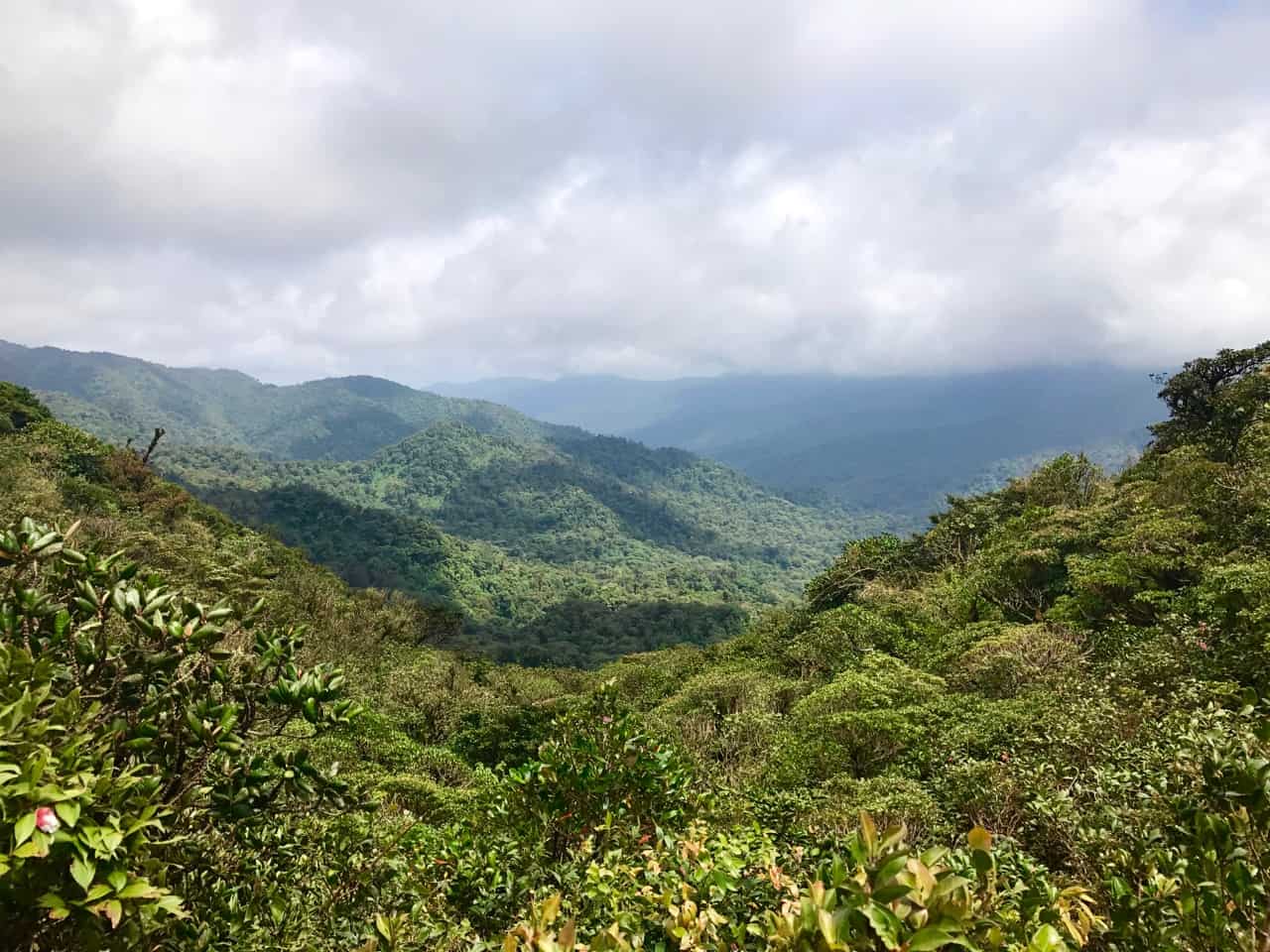
If ever there was a place that epitomised the phrase, ‘good things come in small packages’, Costa Rica must be it.
The Central American country is around the same size as Ireland, and just like its Celtic counterpart, Costa Rica punches well above its weight when it comes to natural beauty and attractions.
Picture lush rainforests, steamy jungles, misty cloud forests, thundering waterfalls, stunning beaches, soaring volcanoes, and a wildlife roll call of Attenborough proportions.
Costa Rica’s government gave up its army in 1946 in favour of diverting funds into protection of the environment, along with education and healthcare. The country went on to become a pioneer of ecotourism.
The country has also been ranked by the United Nations as one of the happiest in the world. Their unofficial national motto, pura vida (pure life), says it all, really.
There are national parks and reserves right across the country, and you could spend a lifetime exploring them. But if, like us, you’ve got just two weeks to play with, then here’s our low-down on 5 of the best parks in Costa Rica.
Manuel Antonio National Park
It might be Costa Rica’s most visited reserve, but Manuel Antonio National Park on the Pacific coast turned out to be a highlight for us and well worth the visit.
Which was a surprise. Given the crowds, we thought we’d hate it.
What we found was that most visitors were in such a rush to get to the park’s legendary beaches that we had much of the wildlife viewing to ourselves.
Not even a howler monkey hanging out on a branch right over the main trail was enough to slow the beachgoers. Our guide simply set up a scope in the middle of the path and we settled in to watch the lazy simian holler at the trees.
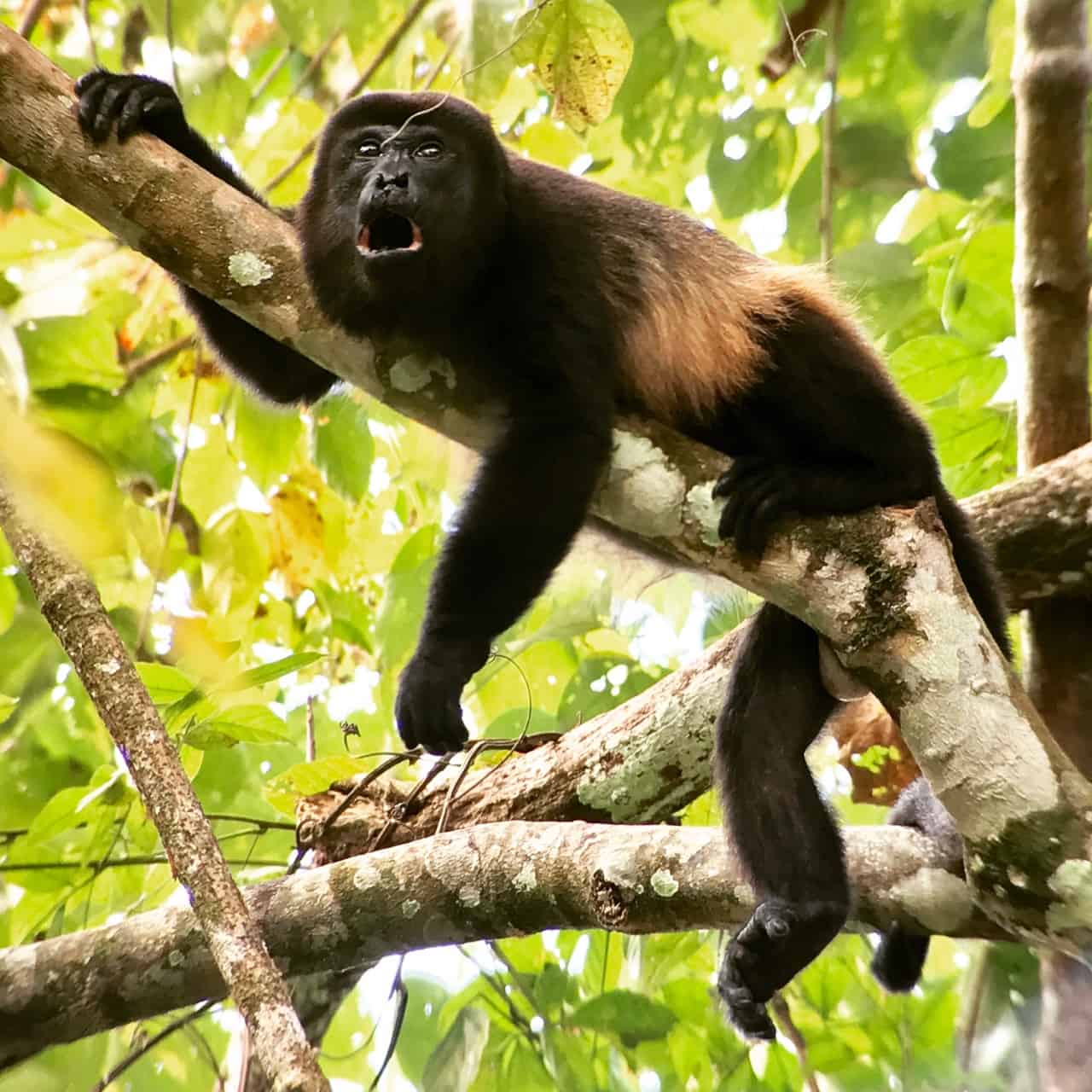
In all fairness to the beachgoers, the four white-sand playas at Manuel Antonio are truly spectacular. They also seem to have the power of a tardis, somehow absorbing swathes of people without feeling overcrowded.
Those beaches, with their inviting turquoise water, are even better appreciated after a guided walk through the lowland tropical rainforest that backs them.
We booked a tour through our hostel, and joined a small group of others to explore Manuel Antonio with a naturalist guide.
Rudi, a surfer and certified tour guide from San José, had the eyes of an eagle. Over the next couple of hours, he found us howler and capuchin monkeys, lazy sloths, busy raccoons, iguanas, bats, and a host of birds, bugs and spiders.
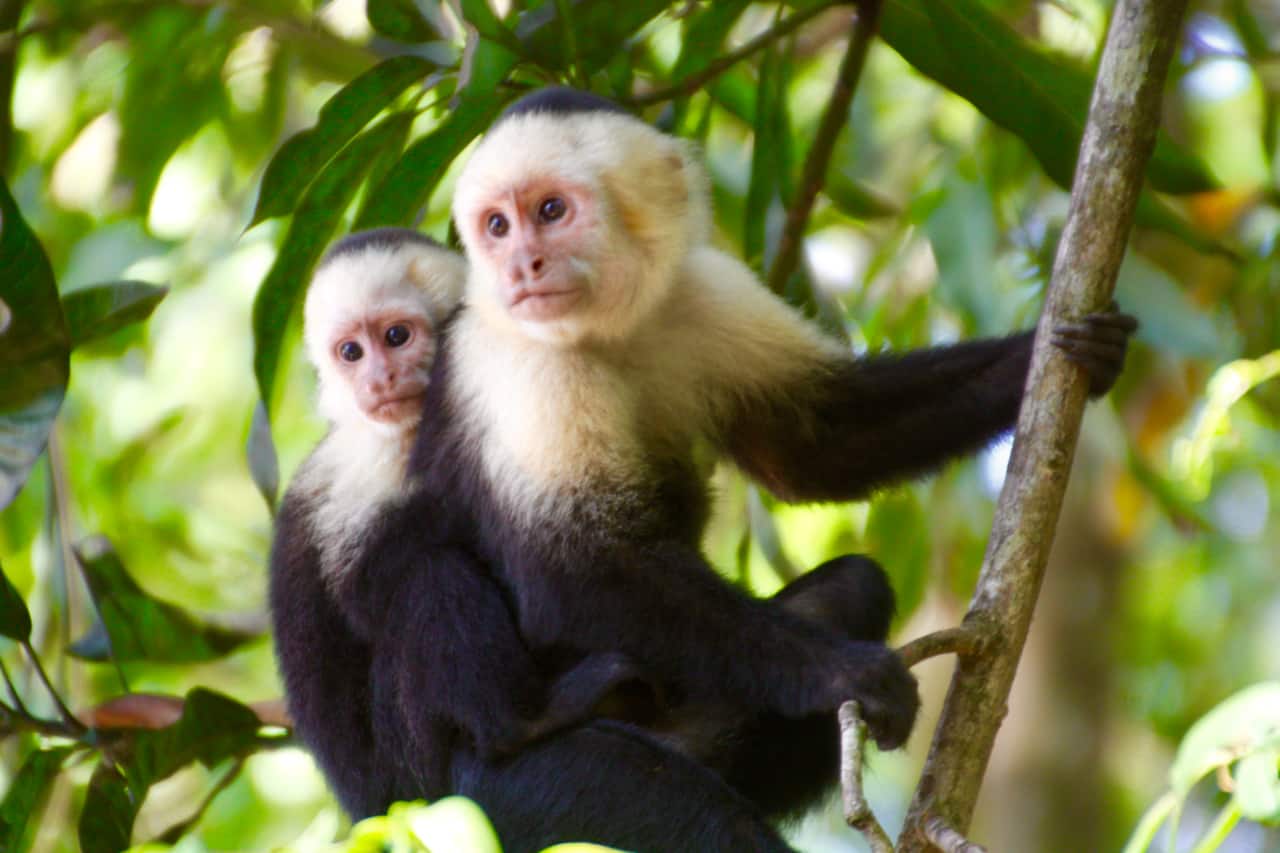
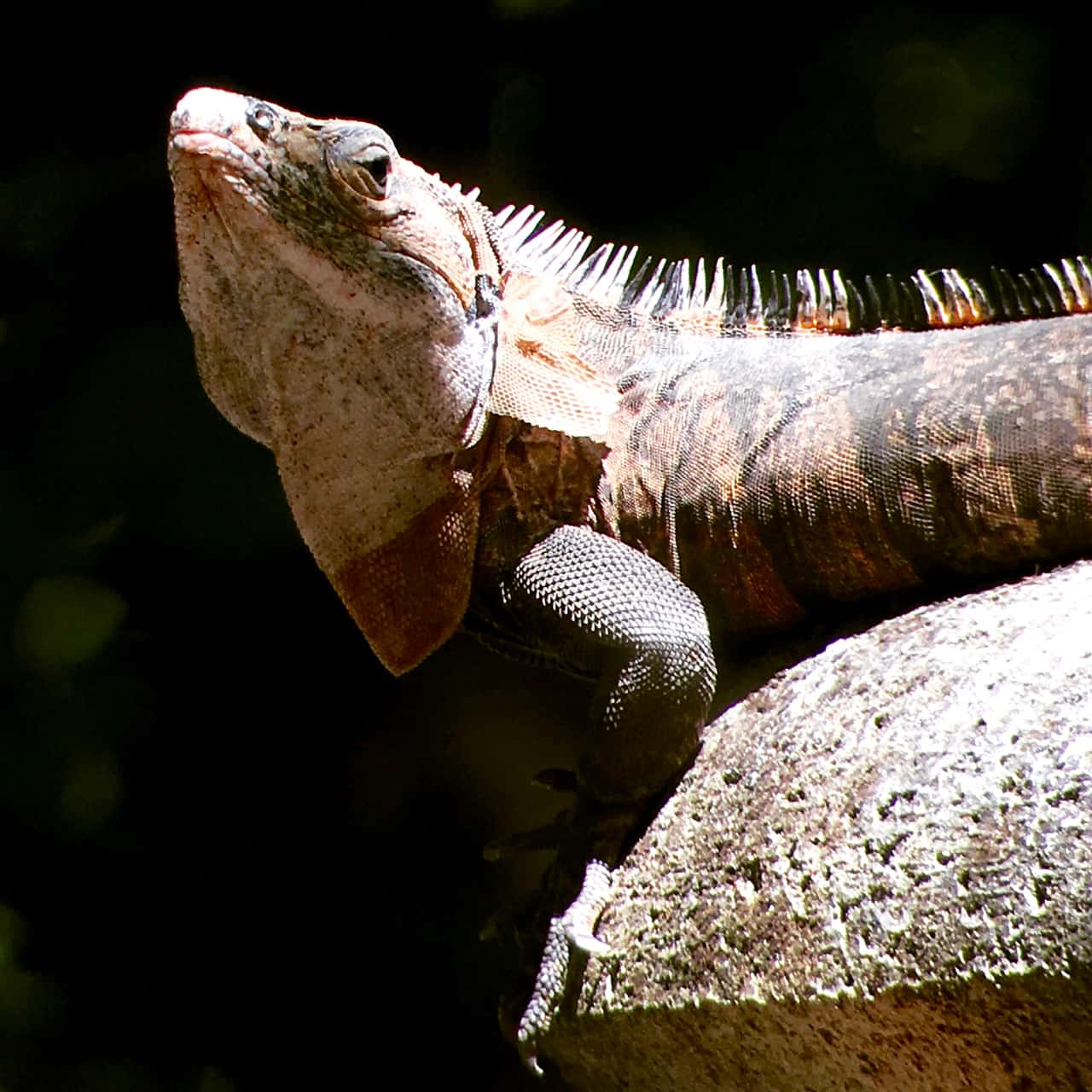
In addition to his talent for spotting forest creatures, Rudi’s vast understanding of the jungle and its inhabitants was a highlight of the walk. As was his high-powered telescopic lens for close-ups of birds, and some other beasties we preferred to see from a distance.
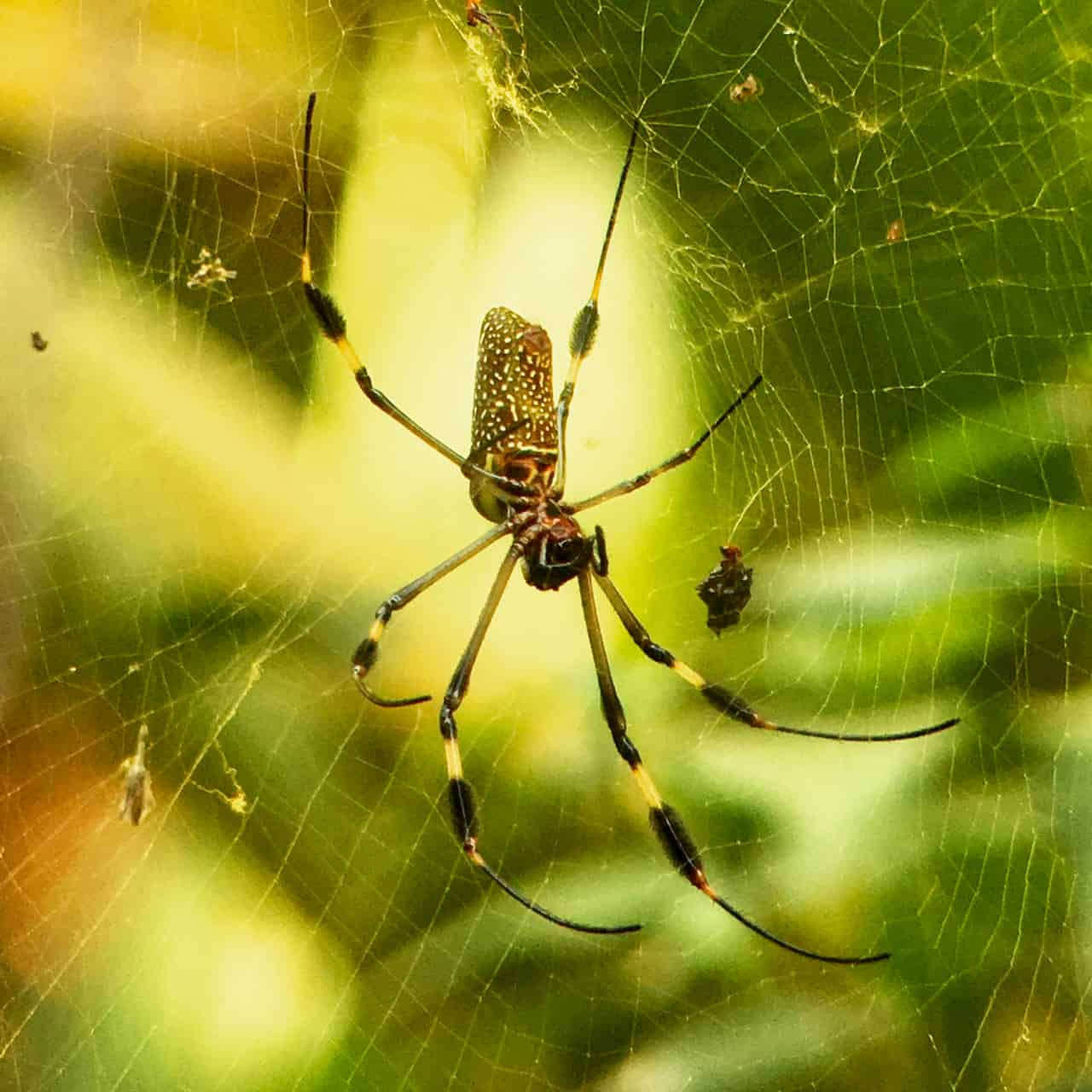
At just 20 square kilometres, Manuel Antonio is the smallest of the national parks in Costa Rica, and it’s easily explored on foot. The longest trail is a little over 2 kilometres.
Then, when the heat finally takes its toll, and it will, you can head to the beach and wade into that beautiful azure water to cool down.
Just watch out for the innocent-looking capuchin monkeys and raccoons: Manuel Antonio’s cheeky ‘beach cartel’ is known to patrol the sands waiting for snatch and grab opportunities around unattended bags.
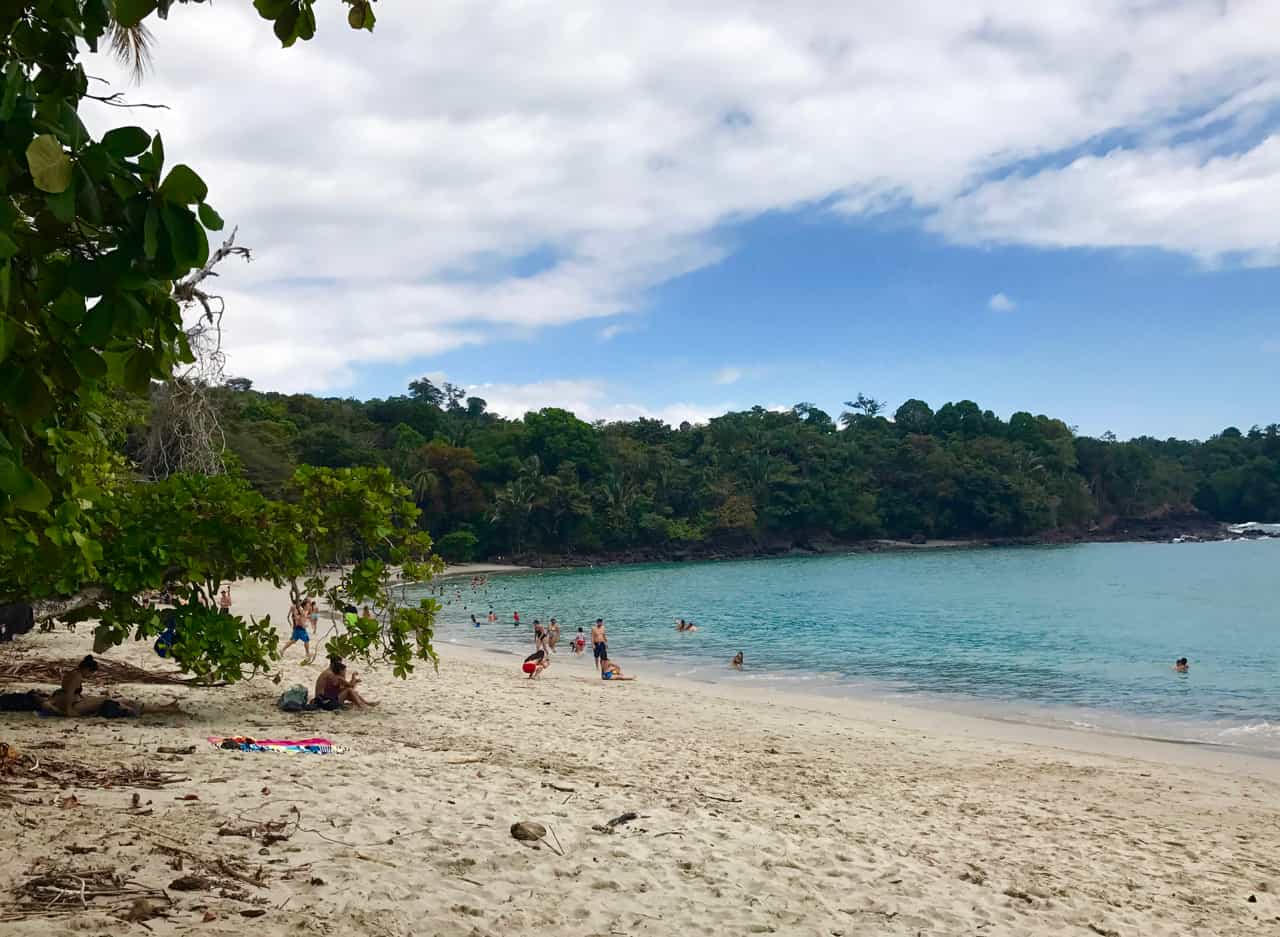
Monteverde Cloud Forest Reserve
Set in the mountains of north-eastern Costa Rica, the misty Monteverde Cloud Forest is a far cry from the hot tropical lowland forest of Manuel Antonio.
The weather may be unpredictable, but you can guarantee one thing: clouds.
Following a long day of travel from the Pacific coast, we arrived in the town of Monteverde to howling winds and a thick cloud cover. It wasn’t above us though. At Monteverde, you’re in the clouds.
There’s a reason National Geographic has declared Monteverde to be cloud forest royalty. It’s one of Costa Rica’s most exquisite landscapes, a mystical, almost preternatural place.
Pristine virgin rainforest rolls across the mountain, shrouded in mist. Vivid greens are interrupted by bright flares of red, yellow and purple flowers. Bird calls resonate through the canopy.
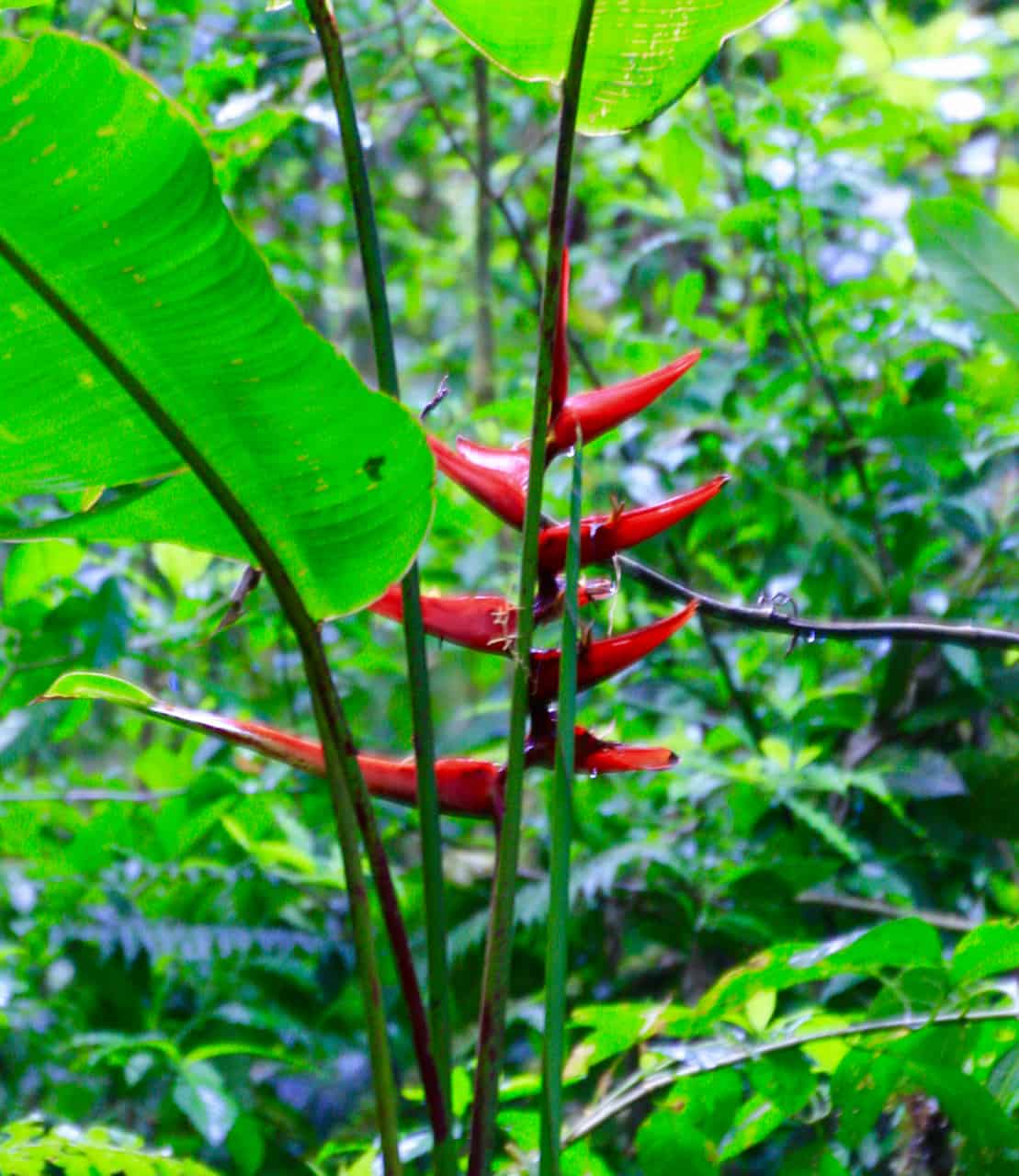
Incredibly, 2.5 per cent of the world’s entire biodiversity can be found within the 14,000 hectares of this verdant forest.
Monteverde is a private reserve and the number of people allowed in the park at any one time is capped, so get here early.
Despite being Costa Rica’s second most popular destination for visitors, the people limit means that once you set off on the park’s trails, it isn’t long before you leave the rest of the world behind.
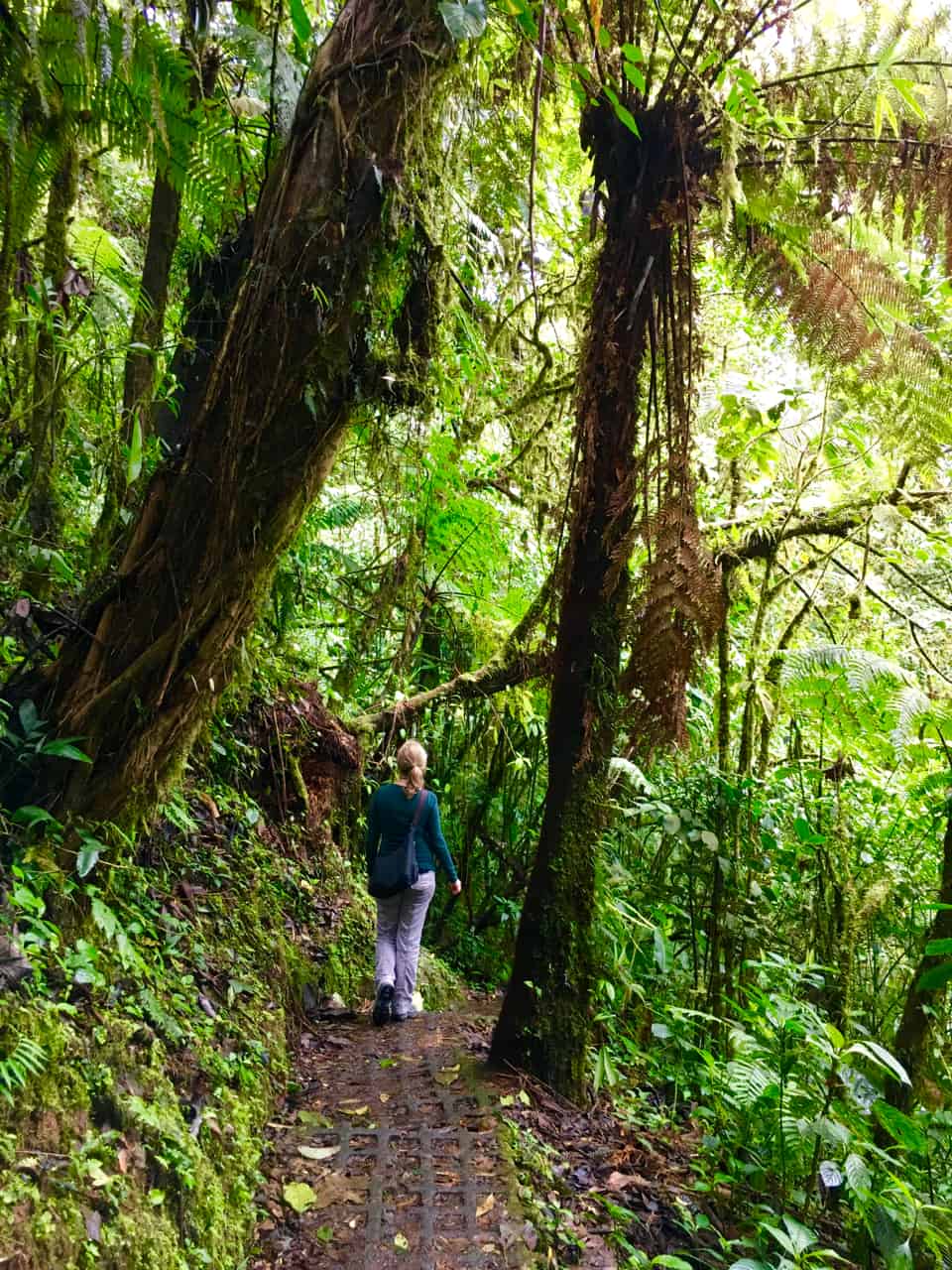
We lost ourselves for hours here, wandering through the dense, lush forest and soaking up the intense quiet and solitude.
We hiked up to Mirador La Ventana for spectacular views across the continental divide, and lingered on the trails, waiting for glimpses of the forest’s diverse and beautiful wildlife.
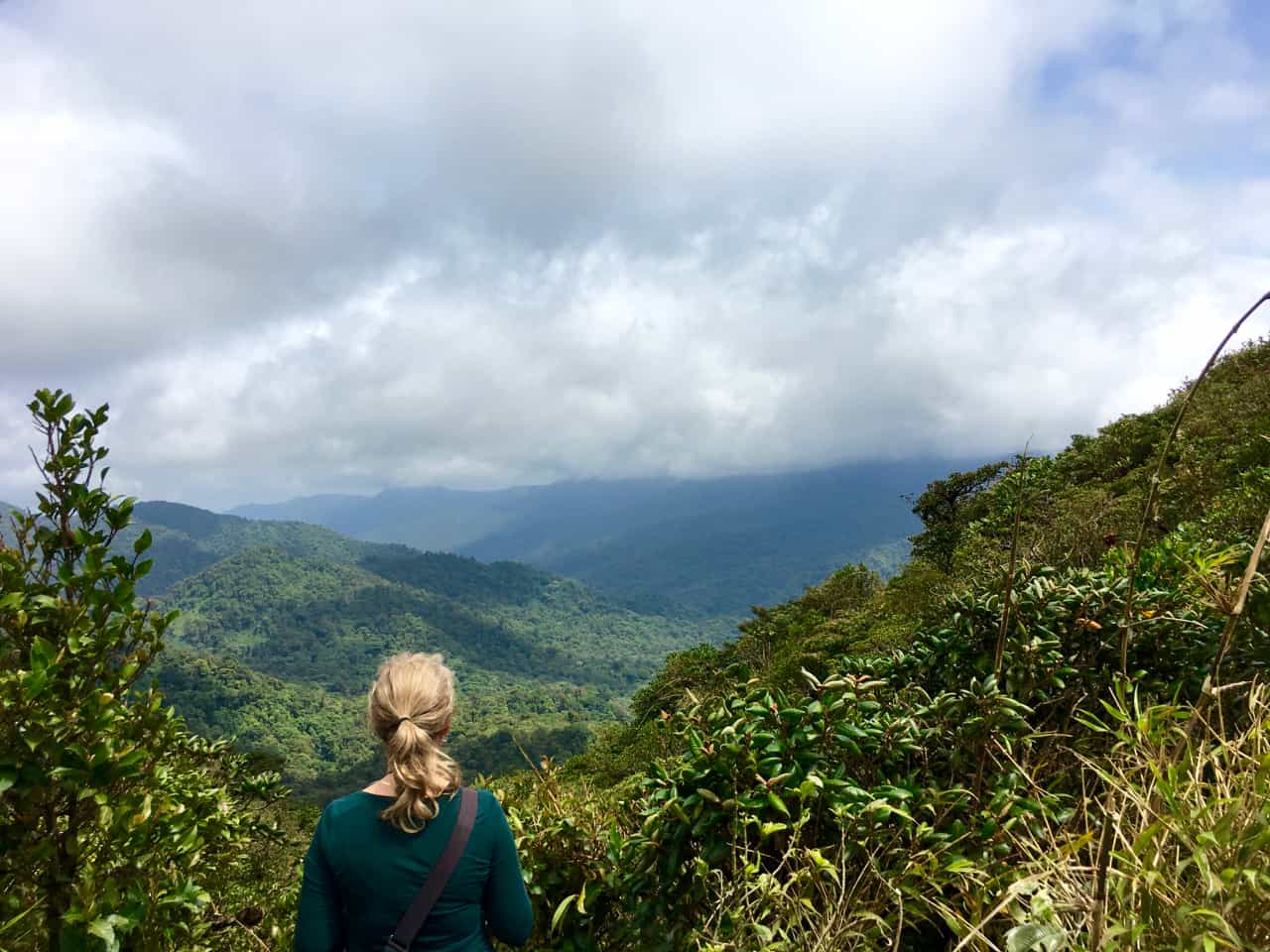
Like the elusive resplendent quetzal, one of Monteverde’s most illustrious bird species.
We were on the lookout for quetzals during our entire visit. Just as we were headed for the exit, we caught a flash of jade and red in the canopy – a magnificent male quetzal. While partially hidden by the foliage, it was a huge thrill to finally see one of these rare birds, and a spectacular way to wind up our time in this magical park.
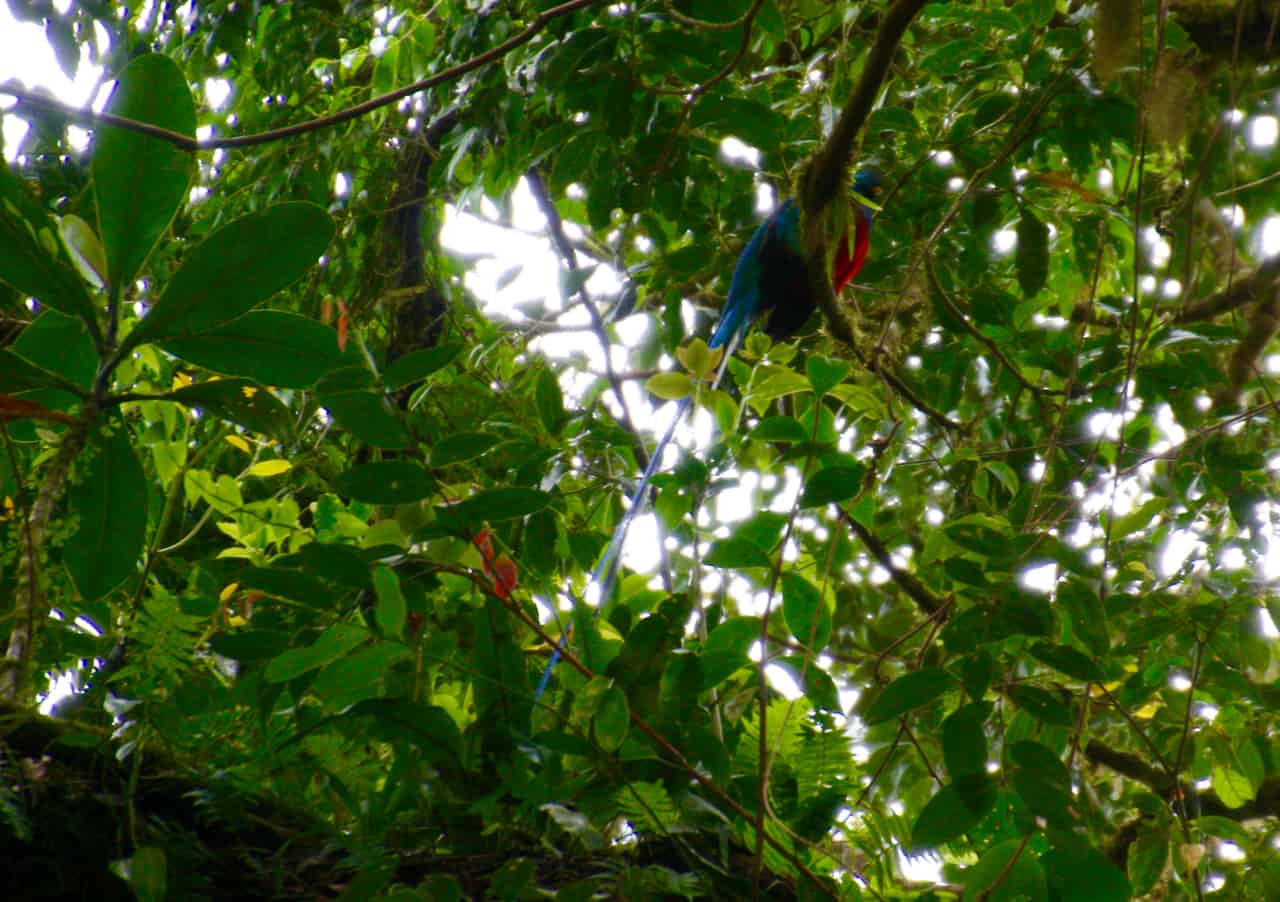
If you can only choose one park to visit, make it this one. Monteverde is hands down one of the best parks in Costa Rica, if not the best.
Mistico Arenal Hanging Bridges Park
You won’t be lacking for things to do when you hit Costa Rica’s Arenal Volcano National Park region.
The dramatic forested landscape around La Fortuna, just 2-and-a-half hours north of San José, is catnip for the adventure seeker, and you’ll find about a thousand ways to drop your money on the great outdoors.
For our part, having spent a good deal of time traversing the forest floor by this point in our visit, we were keen to get a bird’s eye view of the rainforest on one of the region’s canopy walks.
Cue dozens of options, with choices ranging from number of bridges, bridge height, bridge length, and whether you also wanted to zip line, Tarzan swing or rappel your way through the jungle. Or package it with a visit to a natural hot spring.
In the end, we went with a local’s advice and kept it simple, opting for Mistico Arenal Hanging Bridges Park, a private reserve on the edge of the national park, with spectacular views towards the active Arenal volcano.
We had our reservations at first. The name of the place has a touch of the theme park about it. Once beyond the schmicko entryway though, and the slightly cheesy archway framing the Arenal volcano in the distance, we soon found ourselves in another world.
We got the money shot anyway.
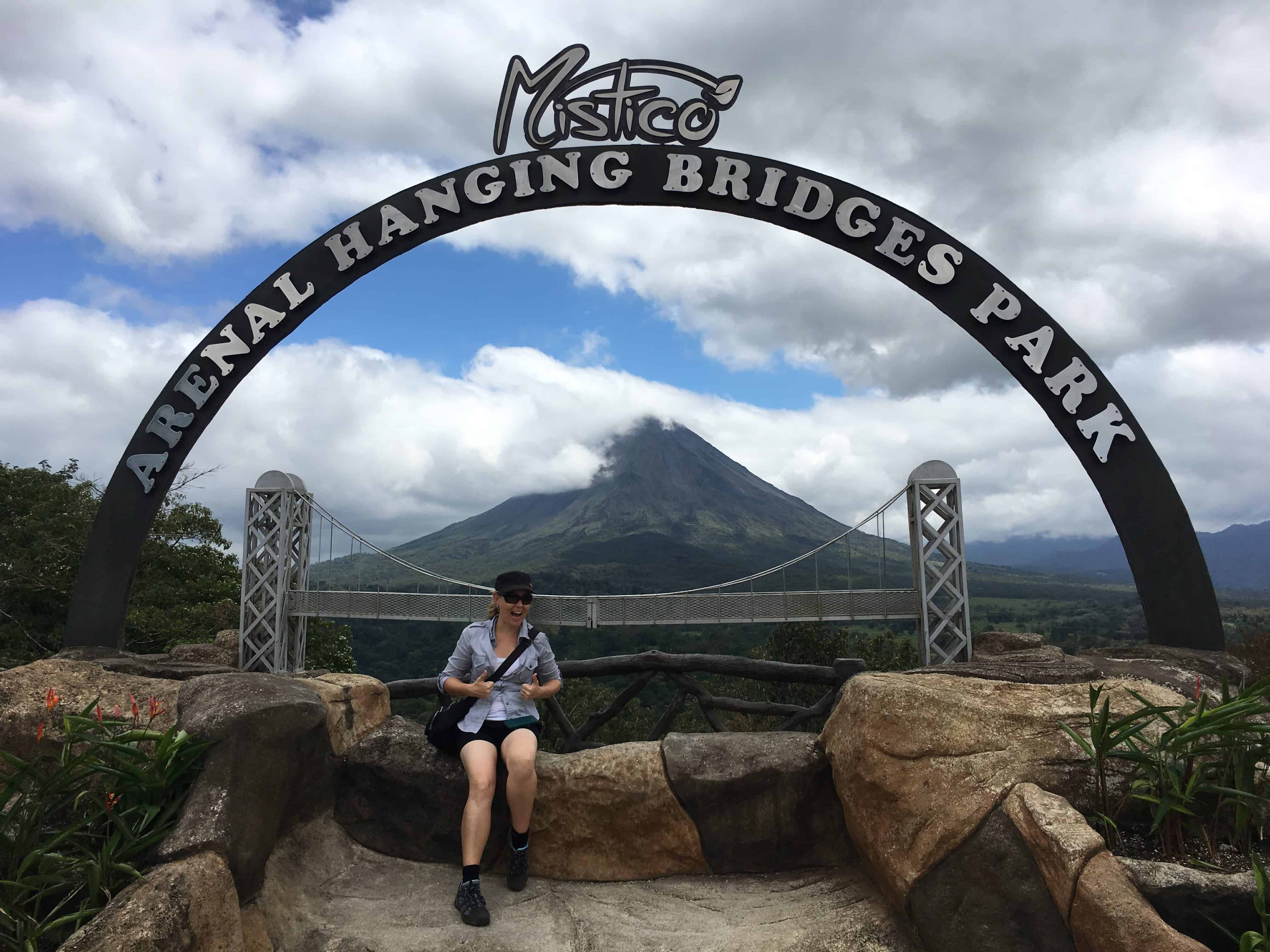
Mistico is a compact park with excellent infrastructure, including a well-marked, well-maintained walking trail, and – the main reason for our visit – a series of awesome hanging bridges: six high bridges in the canopy, and a further ten smaller fixed bridges.
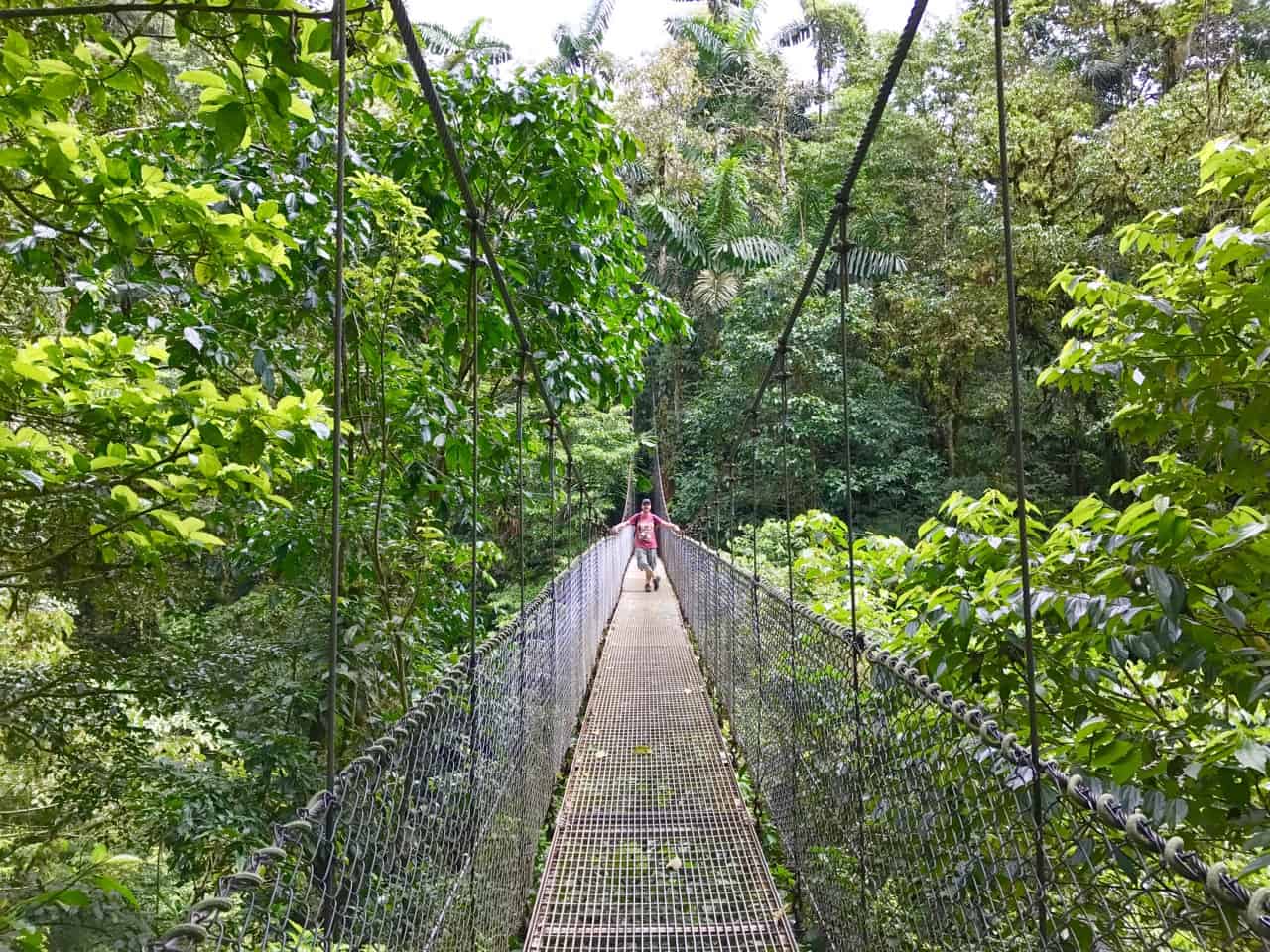
The wildlife spotting is excellent. You’ll see and hear a great variety of bird and insect life and, if you’re lucky, howler monkeys, sloths and snakes might make an appearance.
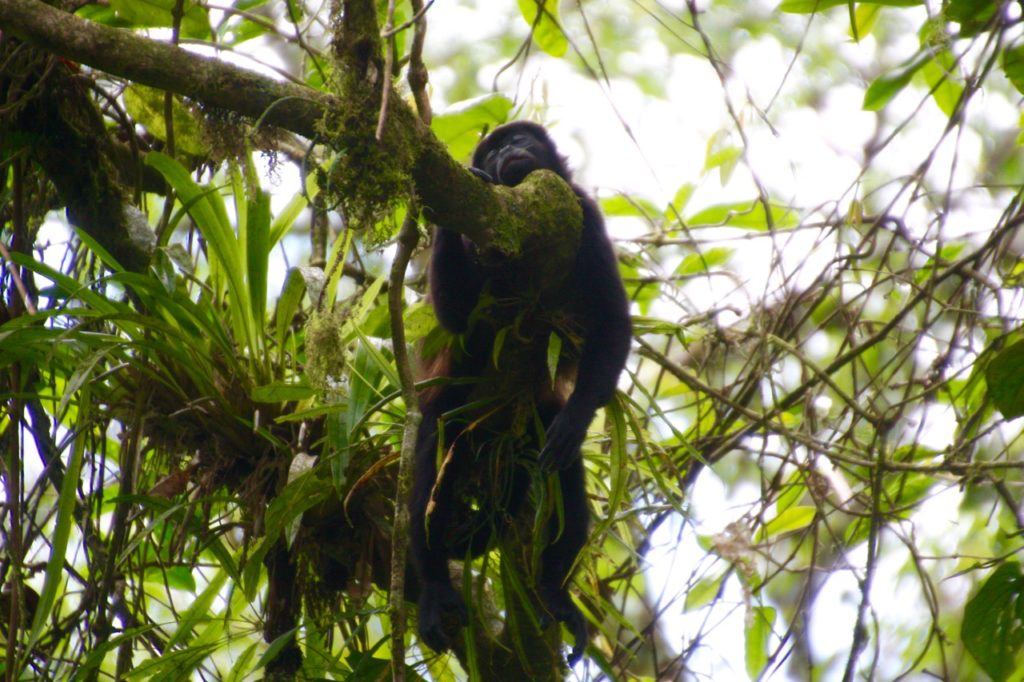
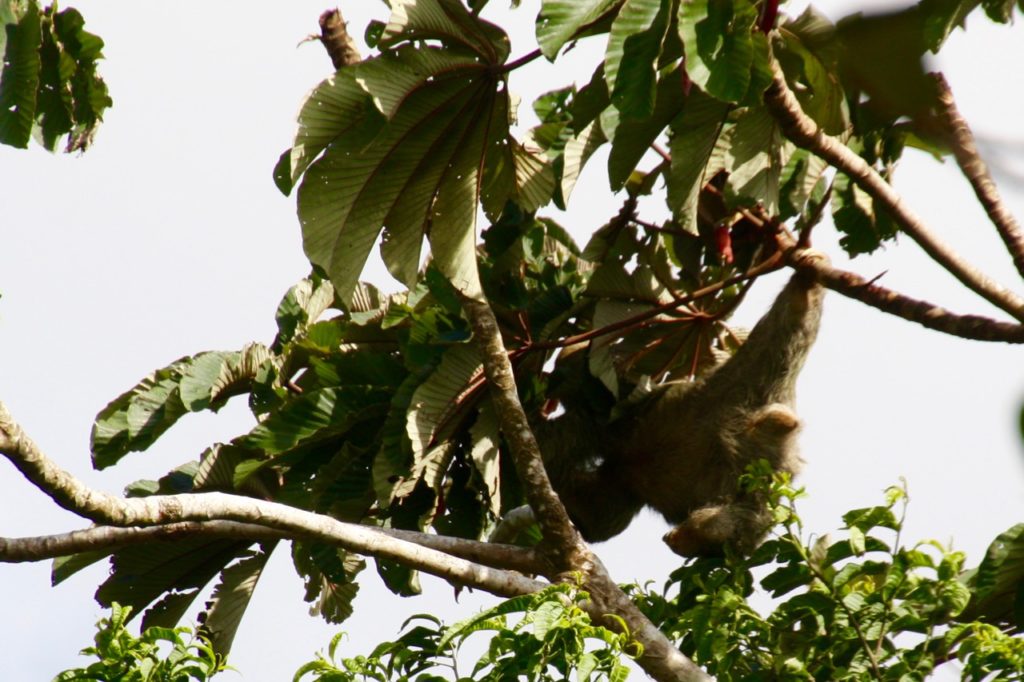
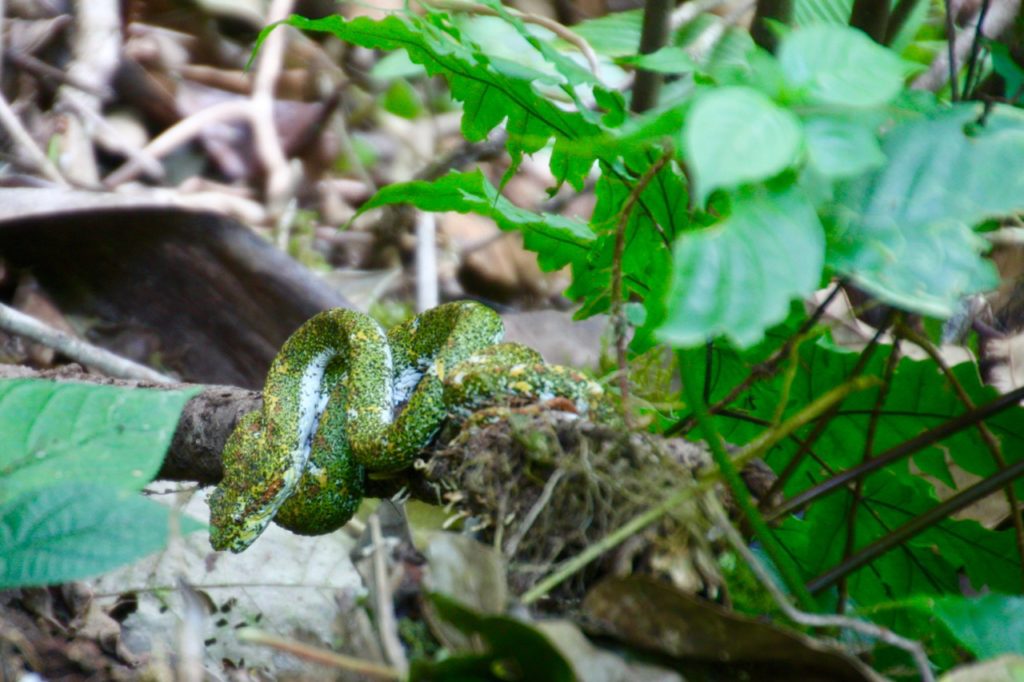
Keep your eyes peeled for the local residents.
The highlights for us in this park ranged from watching marching leaf cutter ants toting shards of foliage three times their own size; to following a brightly-coloured pair of keel billed toucans as they croaked their way through the treetops.
Like many of the top notch parks in Costa Rica, Mistico is hugely popular. While it’s easy to find space away from others along the walking trail, we did encounter queues at a couple of the hanging bridges, where there are limits on the number of people aboard at any one time. It’s a small price to pay though for an unforgettable walk through the treetops.
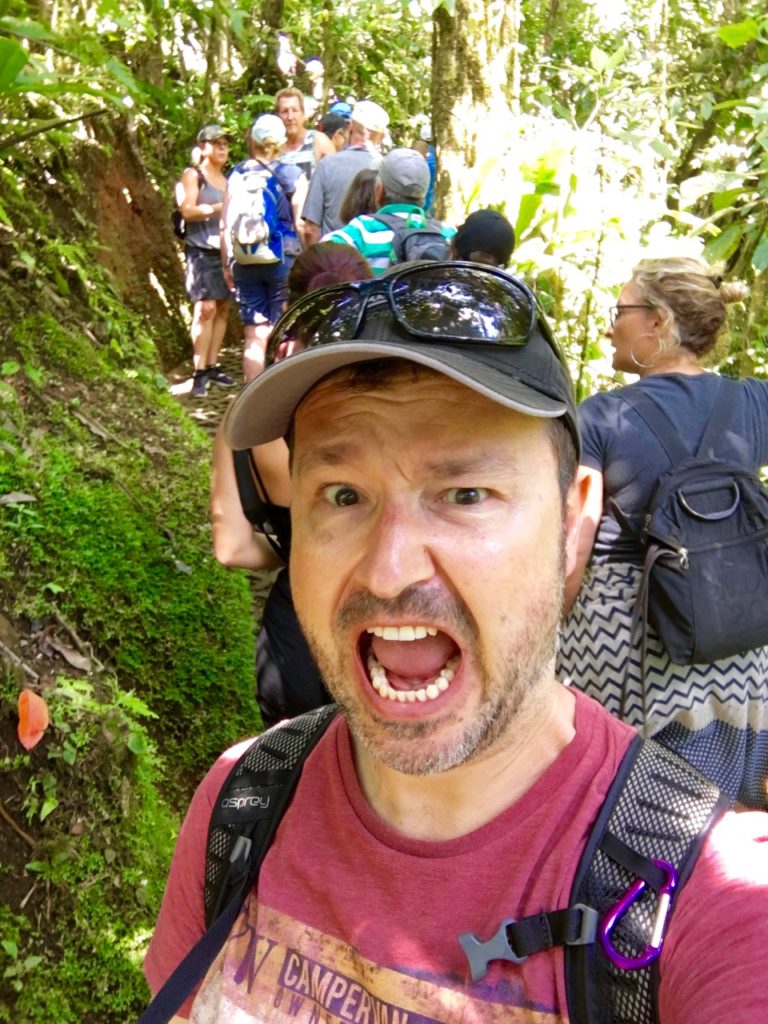
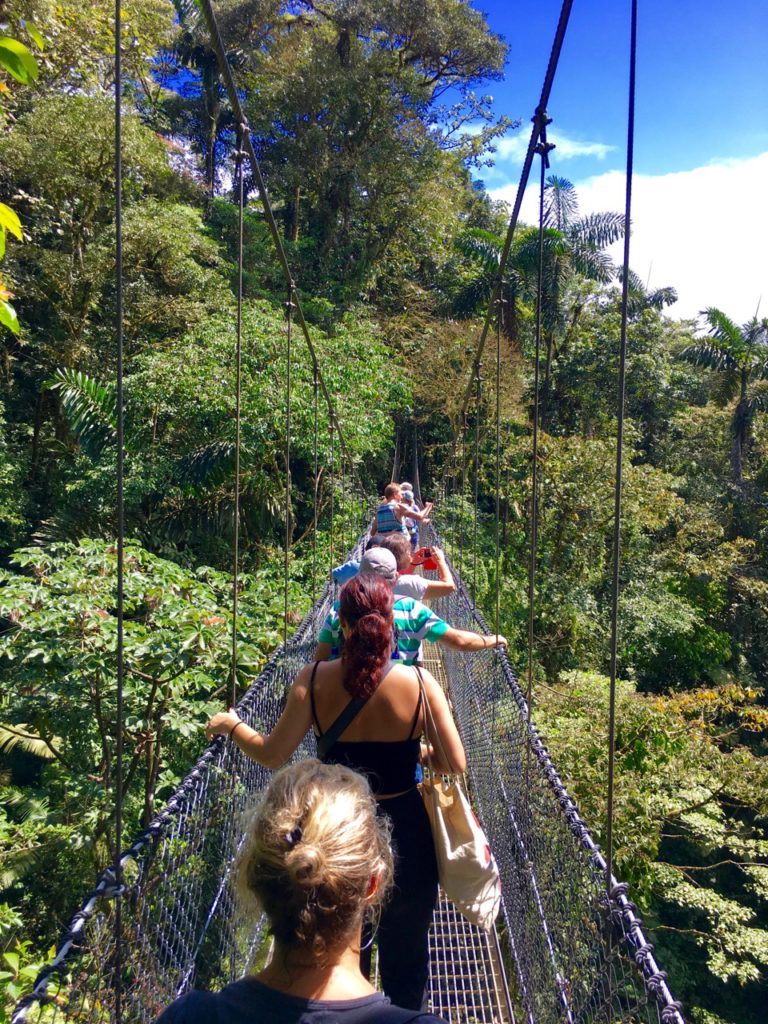
Don’t let a couple of queues mess with your nature-inspired zen.
Tenorio Volcano National Park
For those wanting to get away from the bustle of the parks and attractions around Arenal, a trip to Tenorio Volcano National Park is a must.
Around 50 kilometres from La Fortuna, the distance and relative cost of organised excursions to Tenorio mean far fewer visitors.
The park is a mix of cloud forest and rainforest and is home to rare and shy wildlife like tapirs, cougars, ocelots and jaguars. We saw none of these, but the idea of seeing them was a thrill nonetheless.
It’s worth spending a few hours hiking the main trail in the park. Even if wildlife encounters remain elusive, you’ll get to see the park’s nature trifecta: the stunning Rio Celeste waterfall, the curious Pozo Azul (blue lagoon), and Los Teñidores, where two different coloured rivers meet.
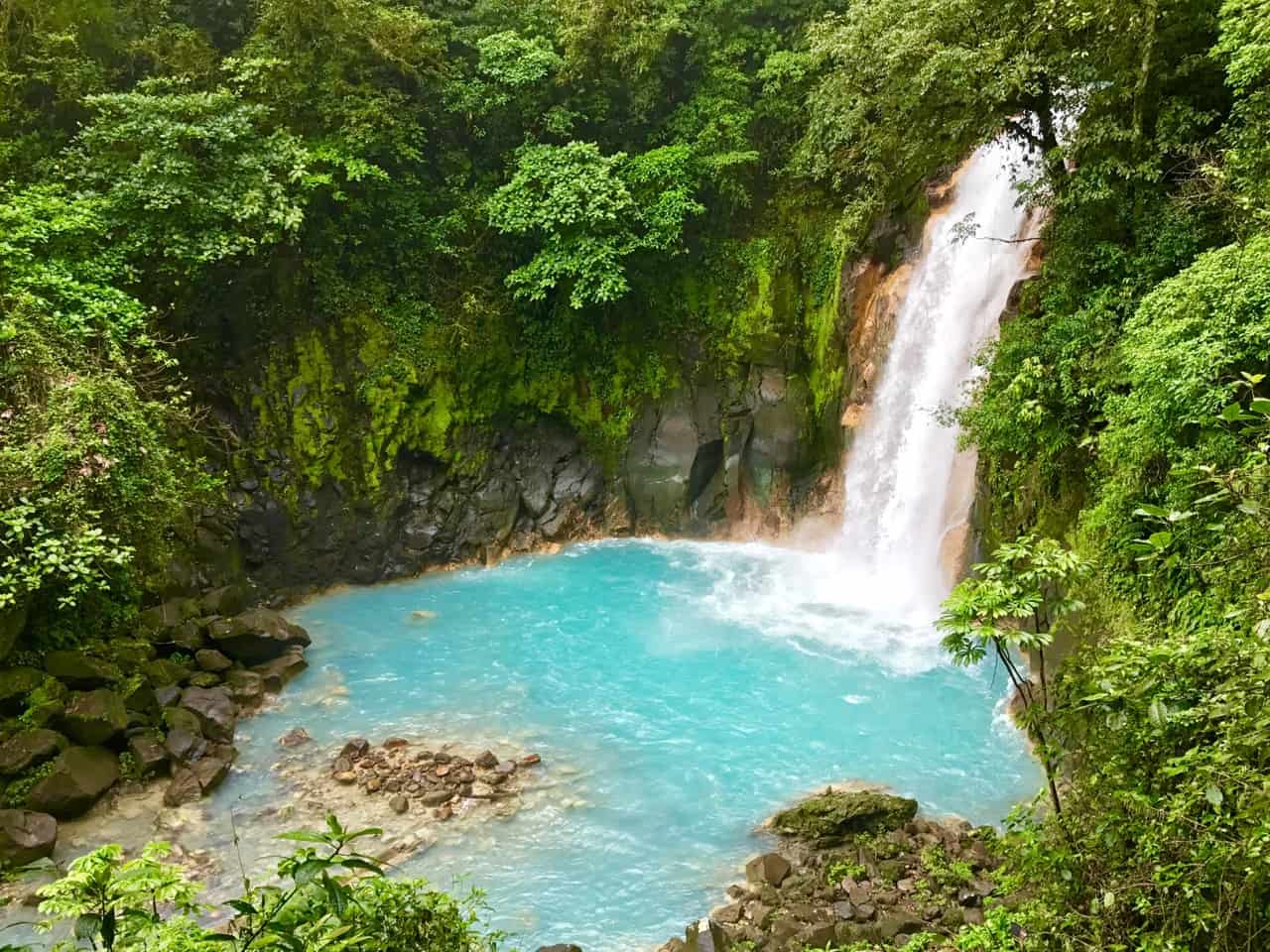
The surreal colour of the water at these sites is a natural phenomenon, an optical illusion created by certain minerals meeting and throwing a fiesta in the water. That’s the busy person’s version, anyway.
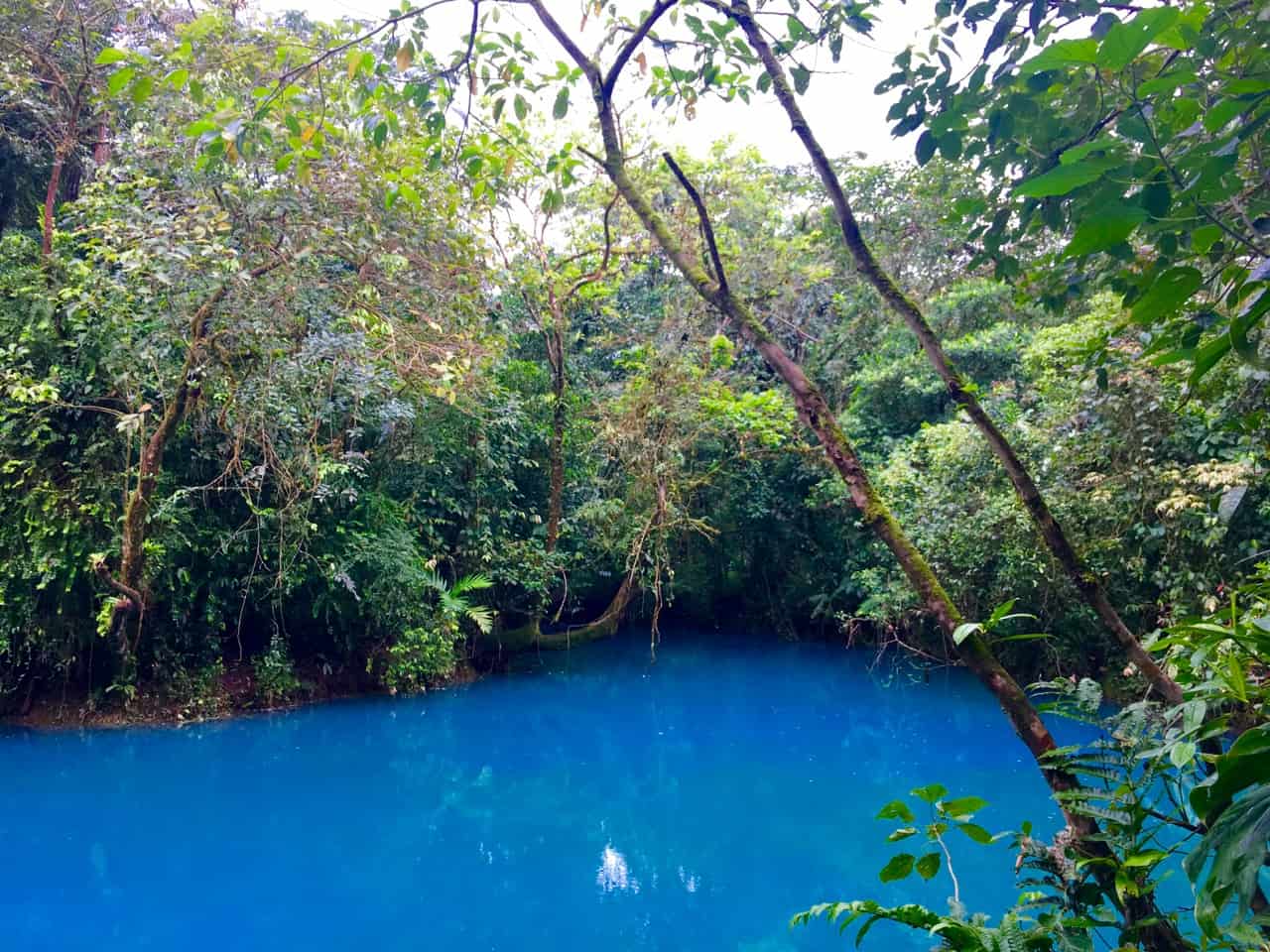

There are also, allegedly, amazing views of the dormant Tenorio volcano to be had from the lookout on the main trail. With cloud forests being what they are though, our view was mostly obscured by, well, clouds.
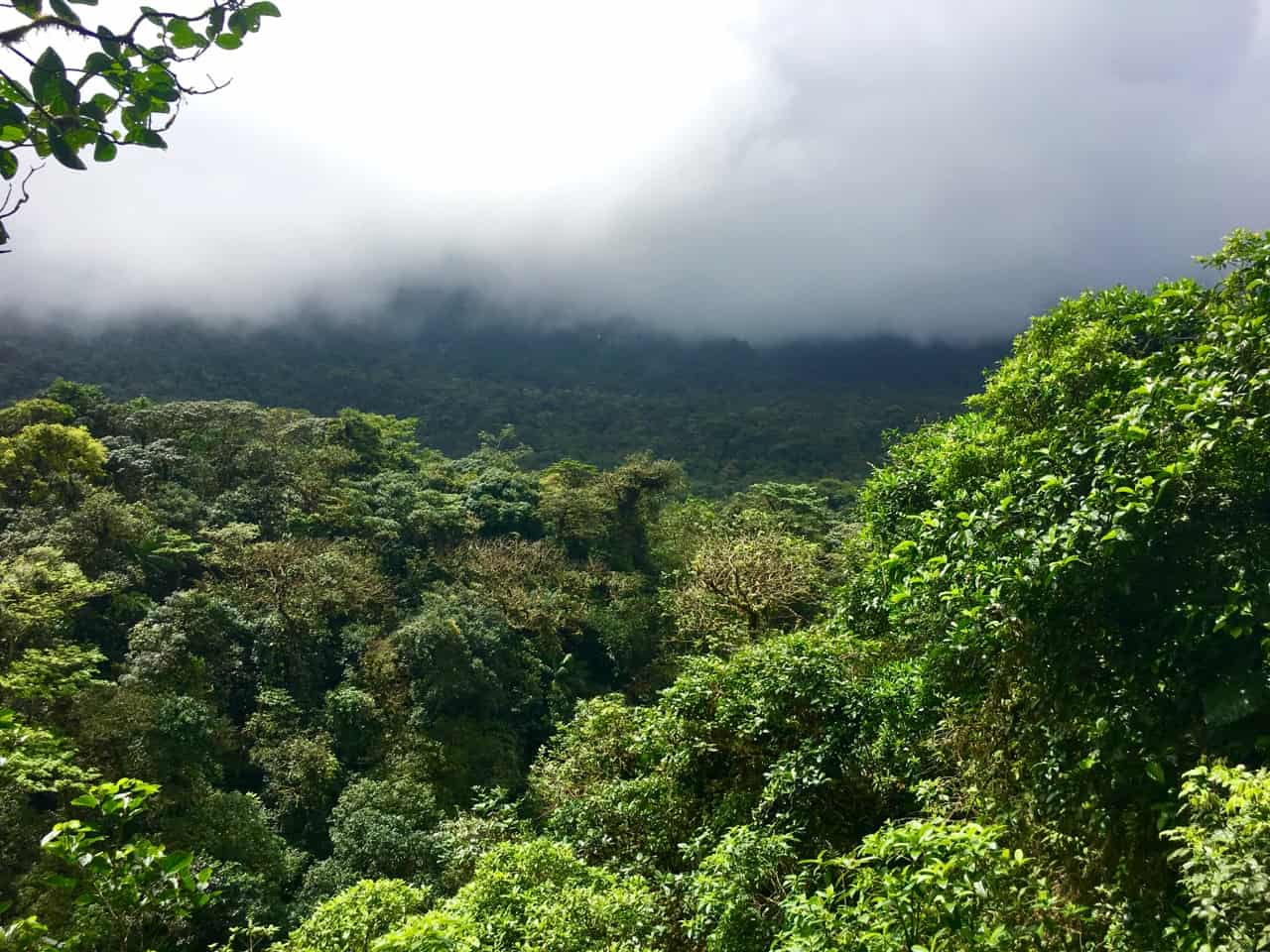
As with Manuel Antonio, we arranged to visit Tenorio Volcano National Park with a guide. Like many parks in Costa Rica, Tenorio can be explored independently, but we find (good) guides vastly enhance the experience by providing context, insights, stories, and much better skills at spotting jungle critters than us.
Tortuguero National Park
Our final pick for our 5 best parks in Costa Rica is Tortuguero National Park, a Caribbean delight, and a completely different nature experience to the parks of the Pacific coast and the continental divide.
The journey to car-free Tortuguero is an adventure in itself. You can fly, but it’s much more fun to enjoy an hour-long glide along shallow canals aboard a narrow boat from La Pavona. You’ll pass through impossibly lush jungle, passing watchful caimans, elegant herons and noisy capuchin monkeys.
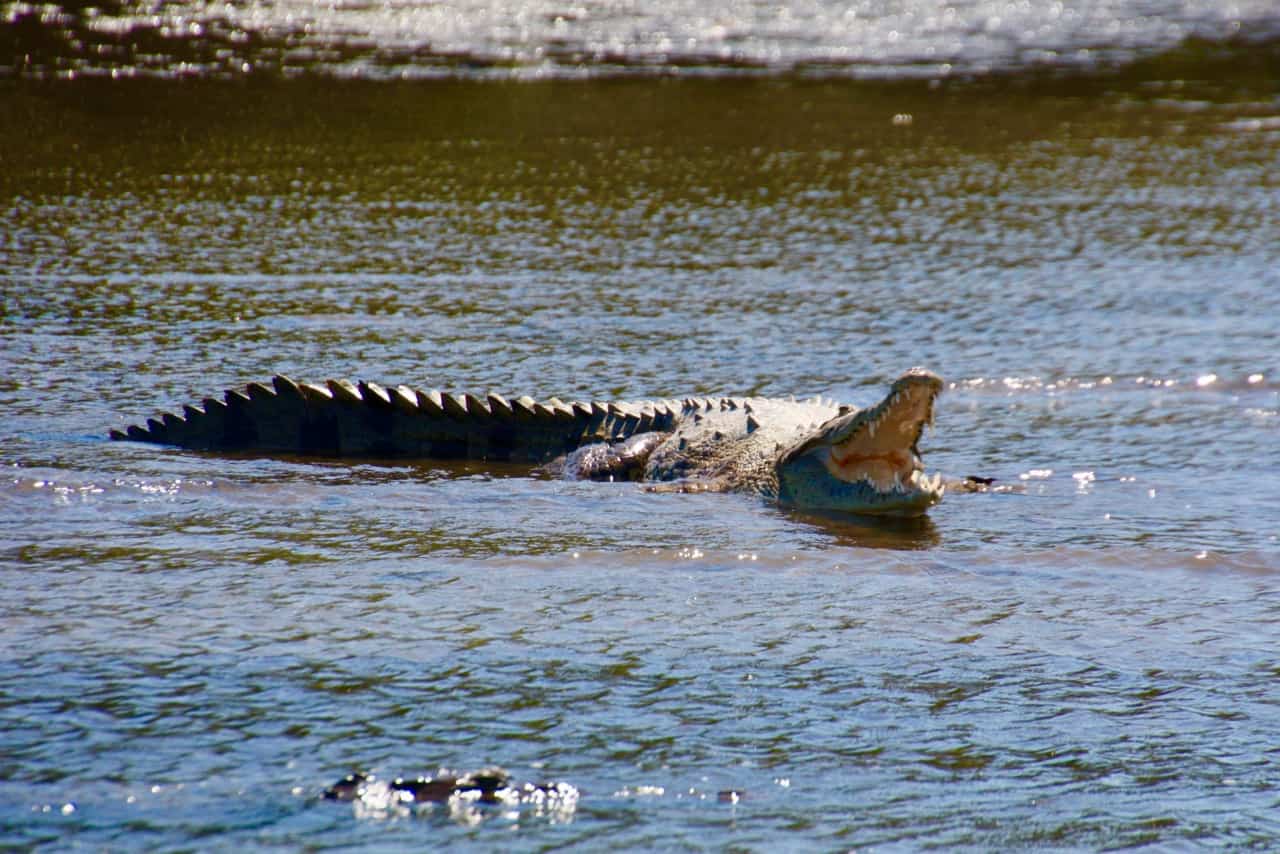
Many people come to this remote park on the north-east coast to see endangered sea turtles nesting on its beaches. But this is one of Costa Rica’s most biodiverse areas, so a visit in any season offers exceptional wildlife viewing.
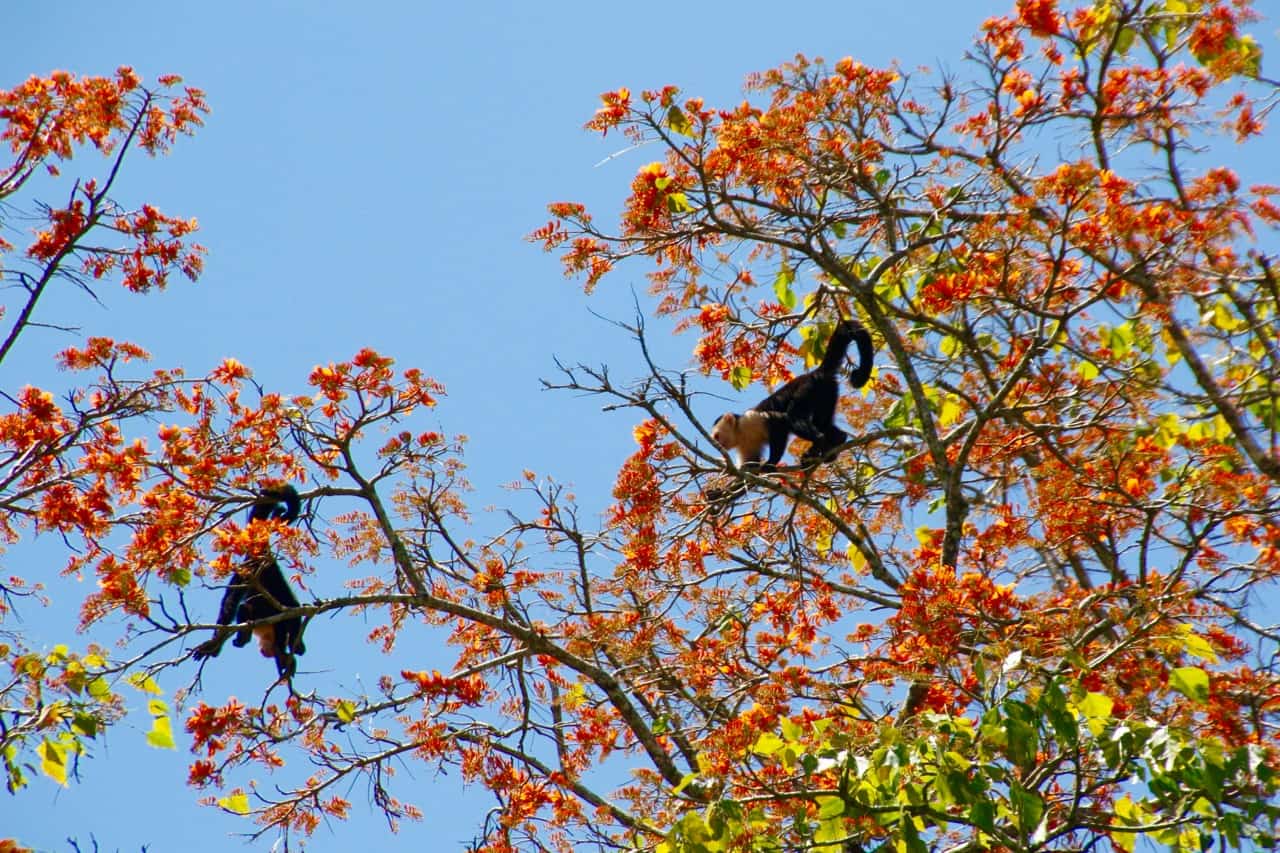
Tortuguero, with its many lagoons and creeks, has been called ‘Costa Rica’s Amazon’. So naturally, a highlight of a visit to the park is a dawn canoe trip along its freshwater canals.
Not only is this the coolest time of day in the tropical reserve, but it’s also when the 400-odd bird species that call Tortuguero home are at their most active.
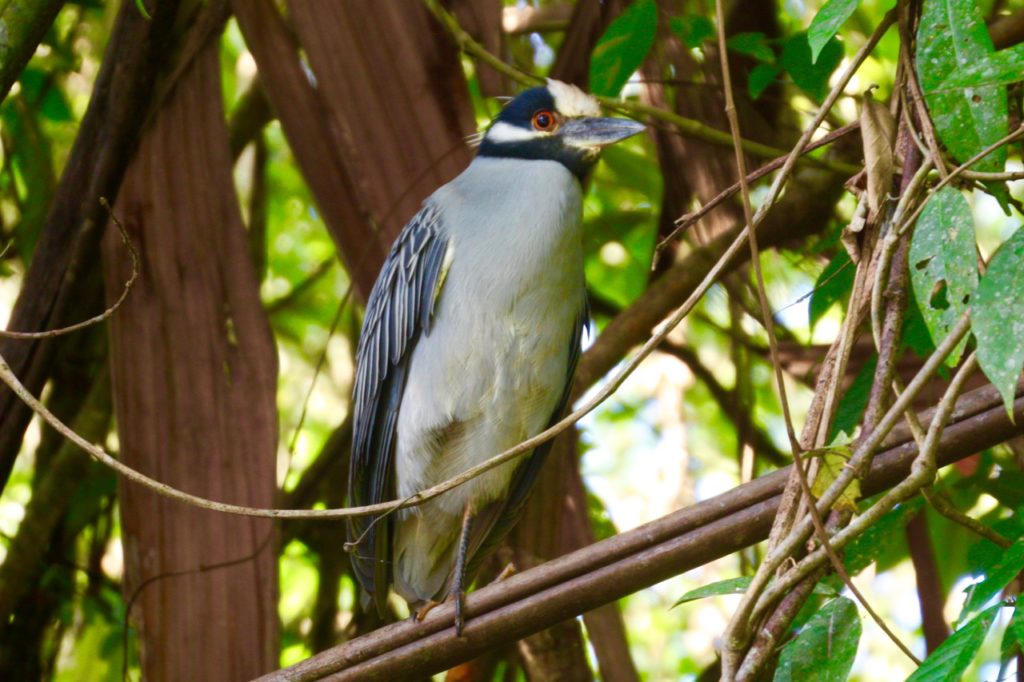
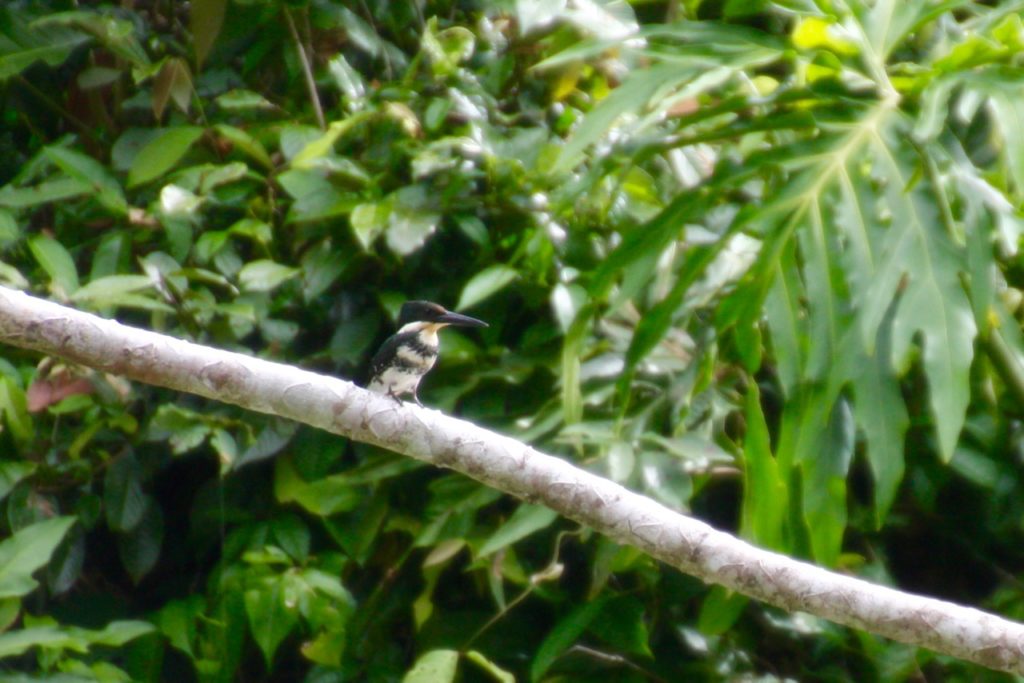
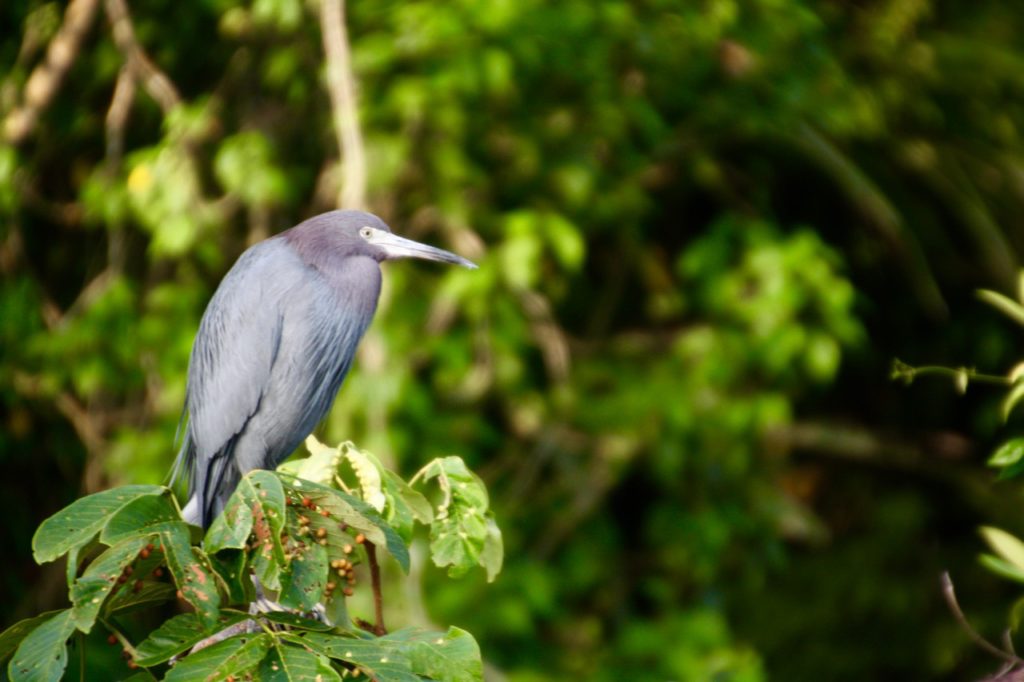
Twitcher’s paradise.
The beauty of a canoe is that there’s no noisy outboard motor ruining the ambience and frightening away the jungle life.
Canoes can also access narrower waterways, meaning more opportunities to spot the park’s more elusive residents, like quirky Jesus Christ lizards, spider monkeys, sloths and if you’re truly lucky, an endangered West Indian manatee.
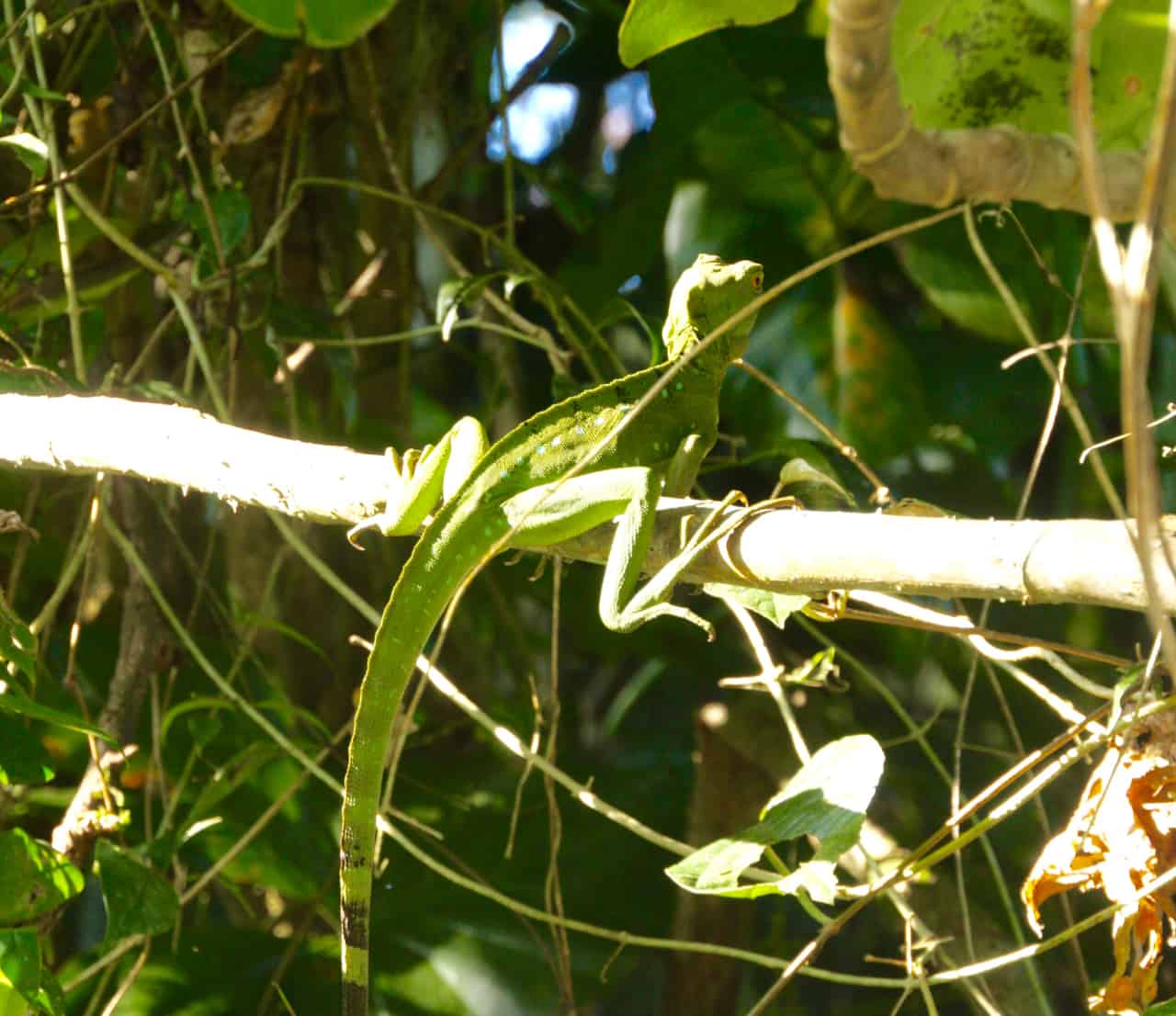
If creepy crawlies don’t freak you out (and even if they do), we also recommend a guided sortie into the rainforest after dark to meet some of Tortuguero’s unsung heroes.
Once the sun goes down, the party gets started in the jungle. Bugs that hide during the day take up pole position on leaves and branches, while a multitude of frog species start up a jungle chorus. Be sure to keep an eye out for Costa Rica’s mascot, the vivid red eyed tree frog.
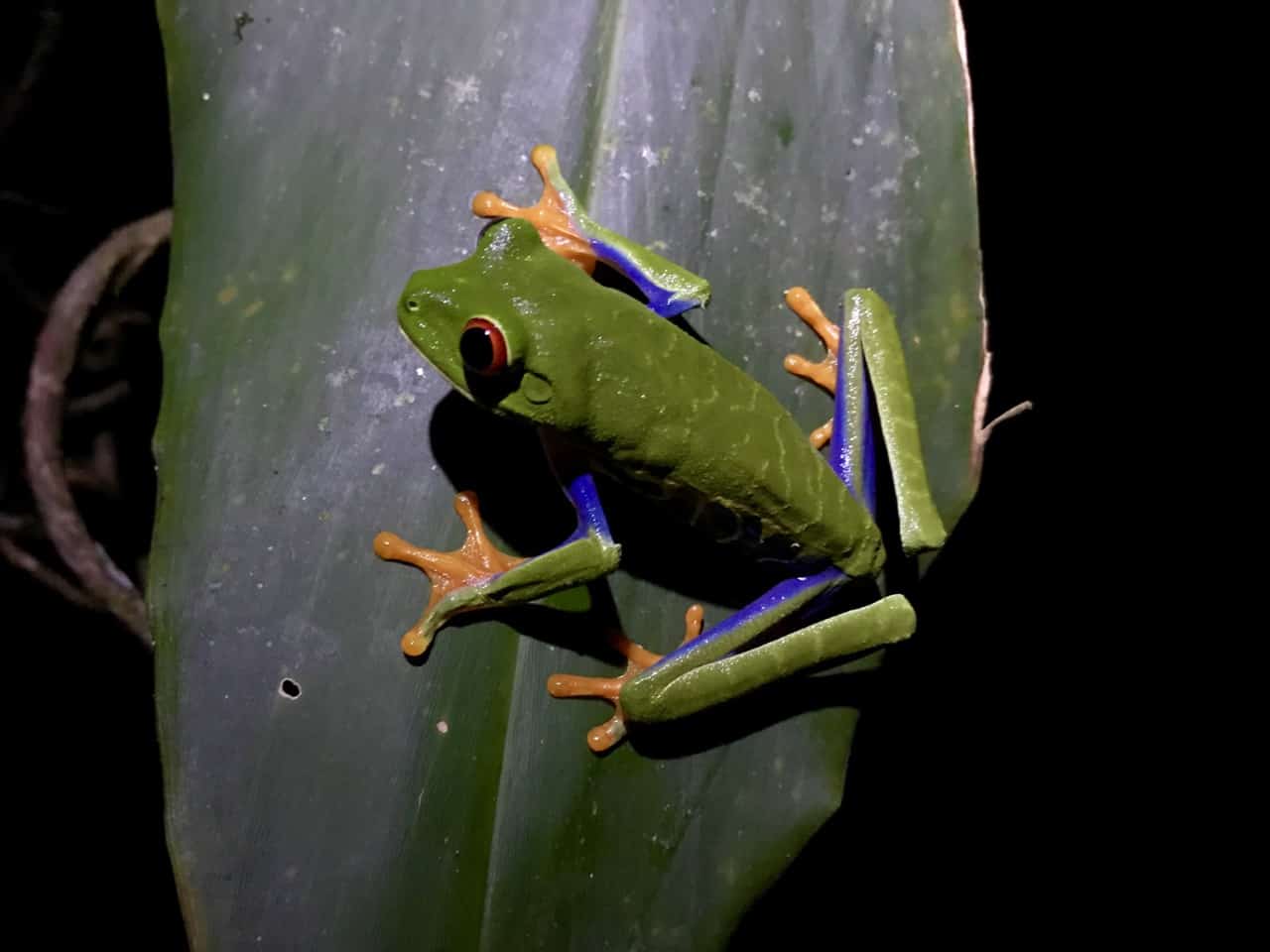
Venture further into the tangled brush and you chance seeing sleeping birds, shy tarantulas and busy tree snakes. Take a cue from your guide though before leaning in for a selfie, some of these night pretties are poisonous.

If watching sea turtles nest is a non-negotiable though, then aim for July to October to see Green Sea turtles and Hawksbills, and February to April for Leatherbacks.
Otherwise, pack your binoculars and get ready for a humid, tropical Costa Rican wildlife experience par excellence.
Good to know
Best time to go to Costa Rica
There are two seasons in Costa Rica: wet and dry. The dry season lasts from December to April and the wet season is May to November. Weather varies from region to region throughout the year though, so best time to go will depend on where you want to go and what you want to see and do.
Getting to Costa Rica
There are two international airports in Costa Rica, one in Liberia in the north-west and the other in the capital, San José. For the parks in this post, San José is your best bet as it’s located in the country’s central valley.
Getting around Costa Rica
Costa Rica has been in the sustainable tourism game for decades and the country is well set up for visitors. It’s easy to travel between major destinations by public transport or shuttle, and hotels can usually help in arranging onward travel or pointing you in the right direction. Many people also hire cars to reach more out of the way locations. All of the parks in this post are relatively near to towns where you can arrange transport and tours.
Tours and excursions
Many parks in Costa Rica can be explored independently and in each of the parks listed here, there were well-marked trails. Going with a guide can make a huge difference to your experience, however, especially if you’re a wildlife or bird enthusiast.
Got a question or comment? Drop us a message below. For more posts on magical nature and wildlife destinations and experiences, head to our wildlife page.

Thankyou for all the tips you giving. I have a question where is the best place to stay to visit those parks? Is there lodging in the parks?
Is there lodging you recommend
Hi Detoledo, thanks for your message! While there generally isn’t accommodation inside the national parks as they are protected areas, there are lots of great stays on the outskirts of the parks on our list (the exception in our list is Mistico Arenal Hanging Bridges Park, which is a private reserve and has a lodge onsite).
As we backpacked through Costa Rica, we tended to stay in small, family-owned hotels and accommodations in the towns nearest to the national parks.
We do recommend checking out the lodge options near to each park using the map feature on Booking.com – this is usually how we find the best places to stay to suit us.
All the best with your planning and enjoy Costa Rica, the nature is epic!